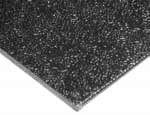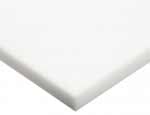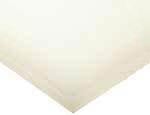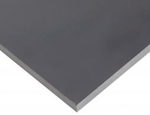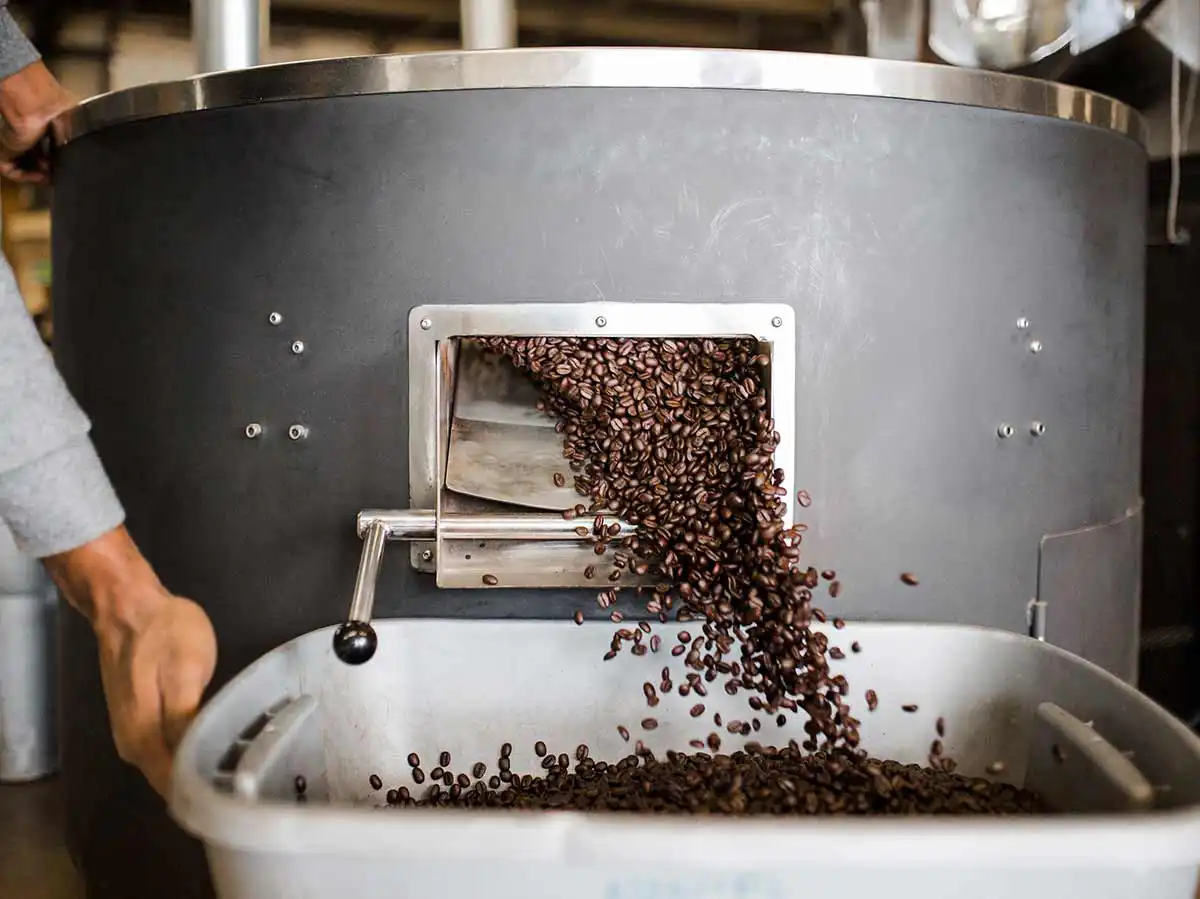
Food Processing Machinery Manufacturing Materials
Materials for NAICS 333241 (Food Product Machinery Manufacturing) and NAICS 311999 (All Other Miscellaneous Food Manufacturing)
Food processing equipment commonly incorporates power transmission parts that are widely used and can be easily replaced. These parts include rollers, guides, pulleys, gears, sprockets, and more. They find applications in various machines involved in processes such as evisceration, chilling, distribution, slaughtering, cutting, skinning, deboning, and batching. Additionally, these power transmission parts are essential components in conveyor systems and industrial packaging systems, making them versatile and adaptable across a range of food processing applications.
Interstate Advanced Materials supplies OEM replacement parts for components such as cupping systems, trippers, spray systems, and light testing machines. In the seafood industry, where parts are exposed to moisture, sea salts, wash-down chemicals, and other water contaminants, additional considerations are necessary. To address these specific requirements, Interstate Advanced Materials provides nylon and natural UHMW (Ultra-High Molecular Weight Polyethylene) in FDA-approved and USDA-compliant grades. These materials are chosen for their resistance to water-related elements and contaminants. Notably, self-lubricating moly- or oil-filled nylon is particularly beneficial for parts that come into direct contact with food. These self-lubricating properties eliminate the need for external lubricants that could potentially compromise the food's integrity and safety.
Properties
- Food safe
- Chemically resistant
- Moisture resistant
- Wear resistant
- Lubricious (self-lubricating)
- Easy to clean
Applications
- Food product machinery manufacturing (e.g. meat, poultry, dairy, beverage, bakery, fruit, vegetable, grain processing machinery)
- Packaging machinery manufacturing for food products
- Coffee and tea processing machinery manufacturing
- Ice manufacturing
- Seasoning, dressing, and flavoring extract manufacturing
- Soup base, condiment, and sauce manufacturing
- Seafood processing machinery
Industries
- Meat and Poultry Processing
- Dairy Product Machinery
- Beverage Processing Machinery
- Bakery and Confectoinery Machinery
- Fruit and Vegetable Processing Machinery
- Grain and Oilseed Processing Machinery
- Packaging Machinery Manufacturing for Food Products
Several types of rigid plastics are commonly used in food processing machinery manufacturing applications. Some of the most commonly used plastics include:
Polyethylene (PE): High-density polyethylene (HDPE) and low-density polyethylene (LDPE) are often used in food processing machinery. HDPE is known for its durability, resistance to chemicals, and moisture barrier properties, making it suitable for applications such as cutting boards, food storage containers, and conveyor belts. LDPE is commonly used for food packaging films and liners.
Polypropylene (PP): PP is a versatile plastic that is widely used in the food industry. It is resistant to high temperatures, chemicals, and moisture, making it suitable for applications such as food containers, piping, valves, and pumps.
Polycarbonate (PC): PC is a transparent and impact-resistant plastic used in food processing machinery for applications such as windows, covers, and guards. It offers excellent visibility, durability, and resistance to heat and chemicals.
Acrylonitrile Butadiene Styrene (ABS): ABS is a rigid thermoplastic known for its toughness, impact resistance, and dimensional stability. It is commonly used in food processing machinery for components such as housing, panels, and structural parts.
Polyvinyl Chloride (PVC): PVC is a widely used plastic known for its chemical resistance and versatility. It is used in food processing machinery for applications such as pipes, fittings, and electrical insulation.
Materials for wheelchair manufacturing applications fall under NAICS codes #333241 and 311999.
- [Extruded ABS Datasheet]
- [Machine Grade ABS Datasheet]
- [HDPE Datasheet]
- [Renovo-MPC™ Datasheet]
- [Polycarbonate Datasheet]
- [Polypropylene Datasheet]
- [PVC Type 1 Datasheet]
- Sorting and grading machines: These machines are used to sort and grade raw materials such as fruits, vegetables, and grains based on size, shape, color, and quality.
- Washing and cleaning machines: These machines are designed to clean and wash food products, removing dirt, debris, and contaminants. They can include equipment like wash tanks, brush washers, and spray washers.
- Cutting and slicing machines: These machines are used to cut, slice, dice, or chop food products into desired sizes and shapes. Examples include slicers, dicers, cutters, and shredders.
- Mixing and blending machines: Used for combining ingredients, mixing dough, or blending food products, these machines ensure uniformity in texture and consistency. Examples include mixers, blenders, and kneaders.
- Grinding and milling machines: These machines are employed to reduce the size of food products, such as grains, spices, and coffee beans. They include grinders, mills, and pulverizers.
- Cooking and heating machines: These machines are used for cooking, baking, frying, or heating food products to specific temperatures. Examples include ovens, fryers, steamers, and boilers.
- Packaging machines: These machines are utilized for packaging and sealing food products in various forms, such as bags, bottles, cans, or trays. They include equipment like filling machines, sealing machines, and labeling machines.
- Freezing and refrigeration machines: These machines are used to freeze or refrigerate food products to extend their shelf life and maintain freshness. Examples include blast freezers, walk-in refrigerators, and cold storage units.
- Sterilization and pasteurization machines: These machines are employed to eliminate harmful microorganisms and extend the shelf life of food products. Examples include autoclaves and pasteurization equipment.
- Conveying and handling machines: These machines transport food products between different processing stages. They include conveyors, elevators, and automated robotic systems.
- Thermal Processing: This involves the use of heat to process food products, including techniques like cooking, baking, pasteurization, sterilization, and blanching. Thermal processing helps kill bacteria, extend shelf life, and enhance flavors.
- Freezing and Refrigeration: Freezing and refrigeration techniques involve lowering the temperature of food products to preserve them and maintain their freshness. This includes freezing, deep-freezing, and cold storage methods.
- Drying: Drying is the process of removing moisture from food products to enhance their shelf life. Common methods include sun drying, air drying, freeze-drying, and spray drying.
- Canning and Preservation: Canning involves packaging food products in airtight containers and subjecting them to heat to kill bacteria and prevent spoilage. Preservation methods also include pickling, fermenting, and curing to extend the shelf life of food.
- Fermentation: Fermentation is a process that uses microorganisms like bacteria, yeast, or molds to transform food ingredients, such as grains, fruits, and vegetables. This process helps enhance flavors, improve digestibility, and preserve the food.
- Milling and Grinding: Milling and grinding involve reducing the size of food ingredients by grinding, crushing, or pulverizing. This process uses grains, spices, coffee beans, and other food products.
- Mixing and Blending: Mixing and blending techniques combine ingredients to achieve uniformity in texture, flavor, and consistency. This is commonly used in baking, sauces, dressings, and other processed food products.
- Packaging and Labeling: Packaging involves the proper storage, containment, and protection of food products. It includes various packaging materials, such as bottles, cans, bags, and trays, and labeling for product information and branding.
- Extrusion: Extrusion is a process where food ingredients are pushed through a die to create specific shapes and textures. It is commonly used to produce snacks, cereals, and textured vegetable proteins.
- Mixing and Filling: Mixing and filling techniques involve combining ingredients and filling them into containers or packaging. This includes equipment like mixers, fillers, and sealing machines.





Signup for our Newsletter!
and tricks while staying informed about
our blowout clearance deals
Finding the best shipping rate.


